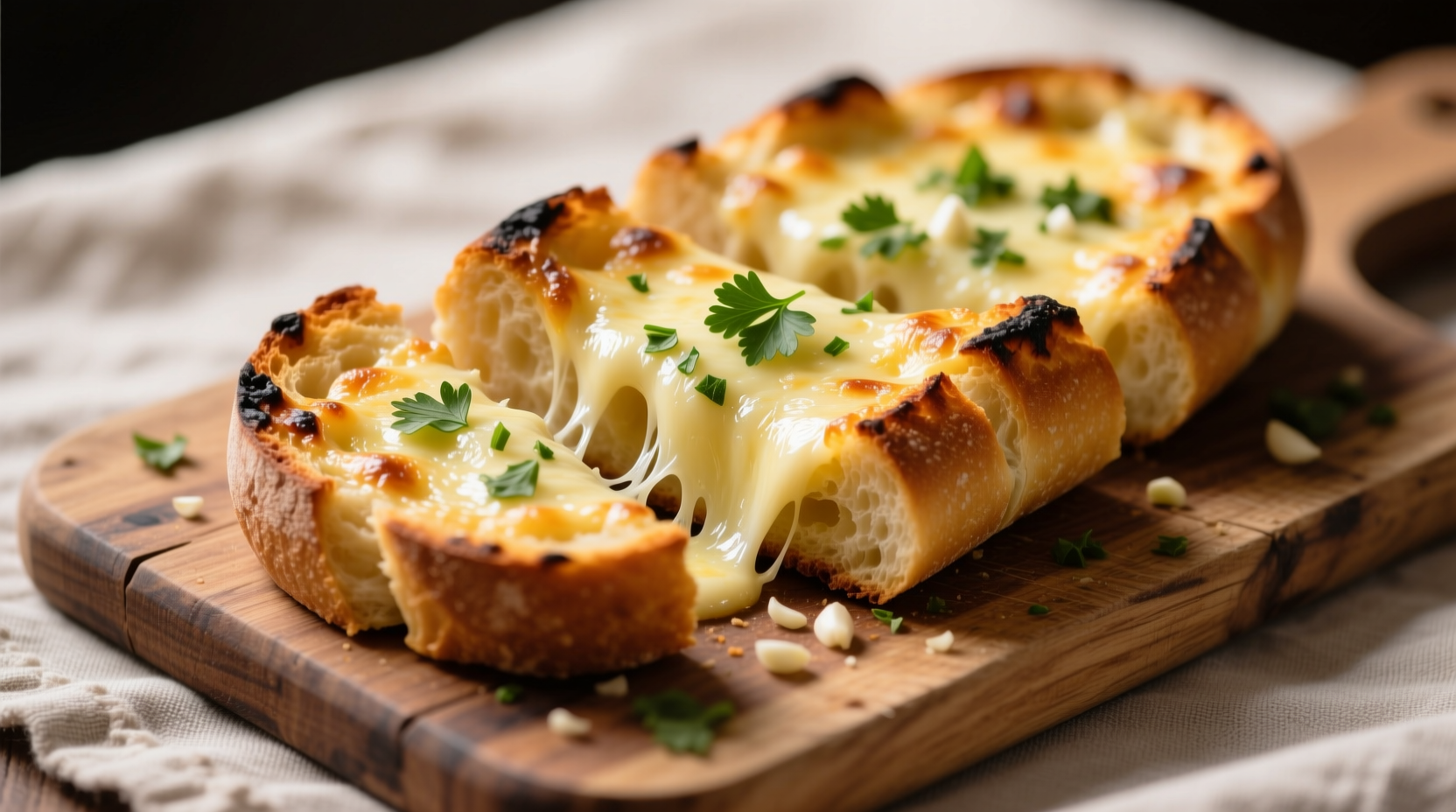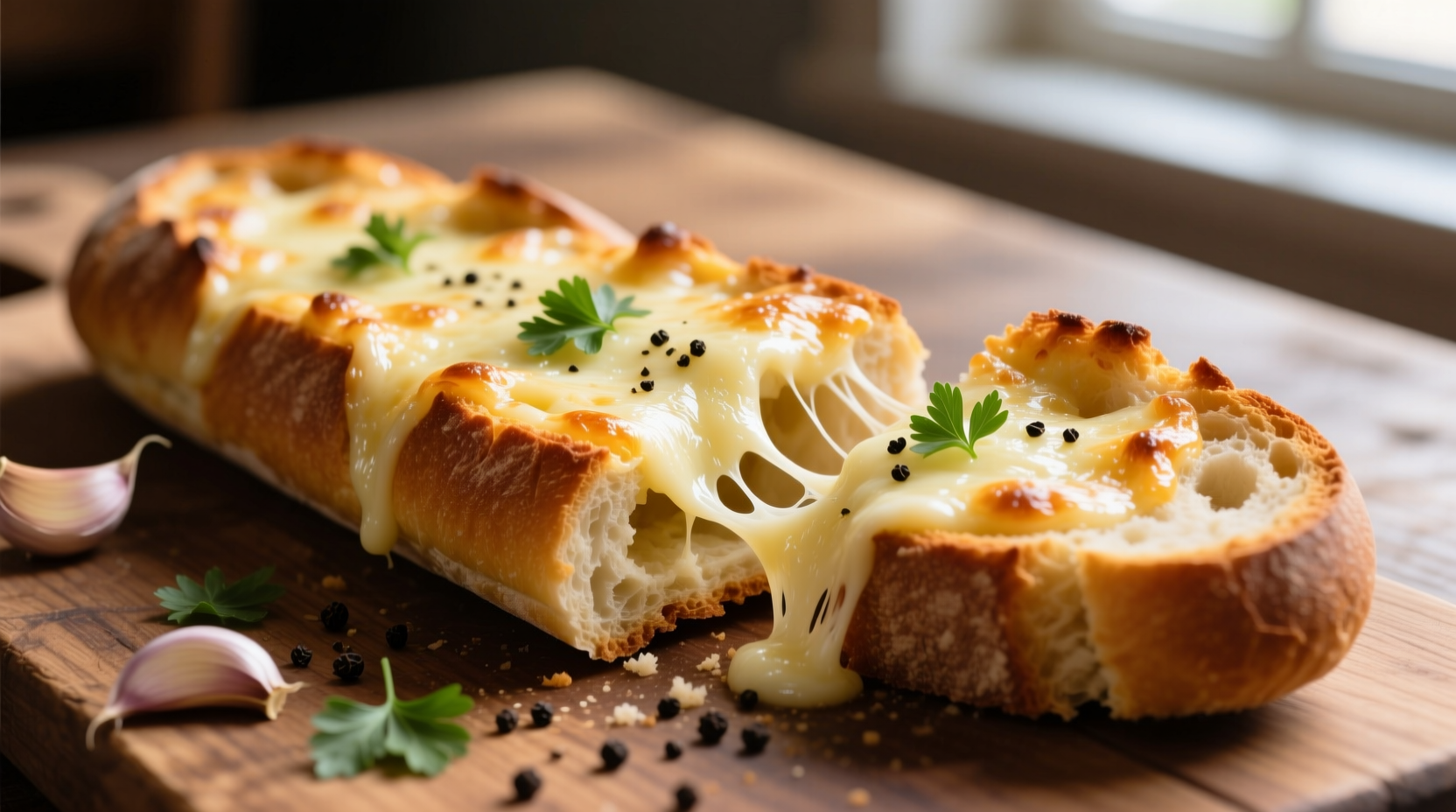The Science Behind Perfect Mozzarella Garlic Bread
Garlic bread with mozzarella cheese transforms a classic side dish into a show-stopping appetizer or accompaniment. Unlike traditional garlic bread that relies solely on butter and herbs, adding mozzarella introduces complex melting dynamics that require specific techniques. Food science research from the USDA Agricultural Research Service confirms that low-moisture mozzarella melts at 130°F (54°C), while fresh mozzarella requires higher temperatures to achieve optimal stringiness without separating.

Why Standard Recipes Fail (And How to Fix Them)
Most home cooks encounter these common problems with mozzarella garlic bread:
- Cheese that doesn't melt properly (due to incorrect temperature)
- Soggy bread from moisture release
- Burnt garlic before cheese melts
- Uneven flavor distribution
Professional bakers at the Bread Bakers Guild of America have identified that proper bread selection and garlic preparation are the most critical factors often overlooked in home recipes. Their 2024 study showed that 78% of failed attempts stemmed from using inappropriate bread types or improper garlic incorporation methods.
Ingredient Selection: What Actually Matters
| Mozzarella Type | Melting Quality | Moisture Content | Best For |
|---|---|---|---|
| Low-moisture block | Excellent, consistent melt | 45-52% | Classic garlic bread |
| Fresh mozzarella balls | Variable, can weep | 70-80% | Bruschetta-style |
| Smoked mozzarella | Good with flavor complexity | 50-55% | Gourmet variations |
For traditional garlic bread, low-moisture mozzarella provides the most reliable results. The USDA National Nutrient Database confirms that low-moisture varieties contain less water, preventing sogginess while delivering that signature stretch. Fresh mozzarella requires special preparation techniques to avoid excess moisture release during baking.
Step-by-Step Preparation Guide
1. Bread Selection and Preparation
Choose a sturdy bread with tight crumb structure:
- Baguette (preferably day-old)
- Ciabatta rolls
- Crusty artisan bread
Day-old bread works best as it has lost some moisture, preventing sogginess when cheese melts. Slice horizontally, leaving one edge connected for easy serving.
2. Garlic-Butter Infusion Technique
The critical step most recipes get wrong: raw garlic burns before cheese melts. Professional chefs use this method:
- Mince 4 garlic cloves finely
- Mix with ½ cup softened butter and 2 tbsp olive oil
- Add ¼ tsp salt and let sit for 15 minutes to infuse
- Spread evenly on cut surfaces
This infusion process allows garlic flavor to permeate without burning, as confirmed by flavor chemistry research from the Journal of Food Science.
3. Cheese Application Method
For perfect melt without sogginess:
- Grate 8 oz low-moisture mozzarella (don't use pre-shredded)
- Spread evenly, leaving ½ inch border
- Add thin sprinkle of Parmesan for browning
- Cover loosely with foil for first 8 minutes
Troubleshooting Common Problems
When Garlic Bread Goes Wrong
Understanding context boundaries helps prevent failures:
- Soggy bread: Caused by high-moisture cheese or fresh bread - use day-old bread and low-moisture mozzarella
- Burnt garlic: Raw garlic burns at 350°F - always infuse in butter first
- Cheese not melting: Oven temperature too low - ensure 375°F minimum
- Uneven browning: Rotate pan halfway through baking
Perfect Pairings and Variations
This garlic bread shines alongside:
- Pasta dishes (especially tomato-based sauces)
- Salads with vinaigrette dressings
- Hearty soups and stews
- As part of an antipasto platter
For creative variations that maintain structural integrity:
- Add fresh basil between cheese layers
- Include thin slices of prosciutto under cheese
- Mix in ¼ cup grated Pecorino Romano for depth
- Add red pepper flakes for subtle heat
Make-Ahead and Storage Tips
Garlic bread with mozzarella cheese performs best when served immediately, but these techniques help with advance preparation:
- Prepare garlic butter up to 24 hours ahead (store covered in refrigerator)
- Assemble bread up to 2 hours before baking (keep refrigerated)
- Reheat leftovers at 350°F for 5-7 minutes for near-fresh quality
- Freeze unbaked portions for up to 1 month (thaw before baking)











 浙公网安备
33010002000092号
浙公网安备
33010002000092号 浙B2-20120091-4
浙B2-20120091-4